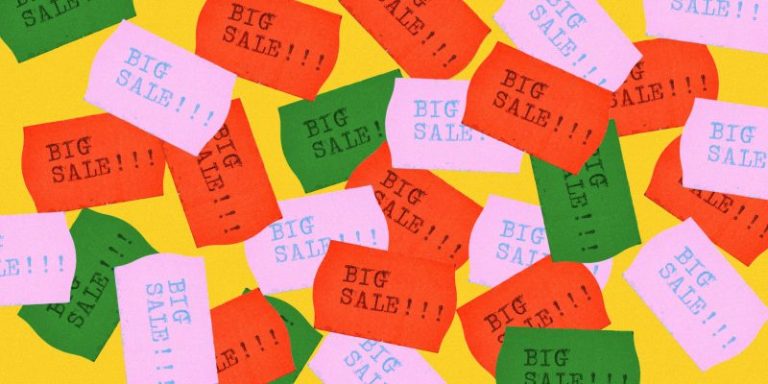Sleep through Black Friday and Cyber Monday? Don’t worry. While the two post-Thanksgiving sales days featured plenty of discounts, retailers are still pushing to lure in shoppers all through December.
Yes, there were record-setting deals in some categories over the holiday weekend, and plenty of people wasted no time taking advantage of them.
In-store sales looked more modest this year compared with e-commerce, as shoppers extended a yearslong trend of shifting more of their buying online. Mastercard found retail sales rose just 2.5% this Black Friday from last — an increase wiped out by inflation — with brick-and-mortar sales rising only 1.1%. But Cyber Monday generated a whopping $12.4 billion, according to Adobe Analytics, up 9.6% from the year before.
It is unlikely that retailers will turn off the promotional sprinkler with less than 30 days until Christmas.
Adam Davis, managing director at Wells Fargo Capital Finance
Monday’s discounts on electronics peaked at 31% off list prices, toys at 27%, apparel at 23% and furniture at 21%, Adobe said, with each of those categories seeing hefty sales growth as bargain-hunters snatched up deals.
But the big discounts started back in October, with retailers scrambling for increasingly frugal consumers’ holiday dollars. As a result, said Adam Davis, managing director at Wells Fargo Capital Finance, “it is unlikely that retailers will turn off the promotional sprinkler with less than 30 days until Christmas.”
Some are calling the day after Cyber Monday “Travel Tuesday,” with airlines and hotels rolling out deals as they head into the slow season. And there’s another chance for deep discounts on “Super Saturday” — the weekend before Christmas, when retailers push to get rid of unsold merchandise.
That means more opportunities to look for bargains, or to get tripped up by less-than-ideal offers.
Consumers headed into the holiday season spending less on high-dollar items and more on lower-cost products, said Samantha Gordon, deals editor at Consumer Reports. While that means many are now “getting more bang for their buck,” some big-ticket purchases can still come with pitfalls, she said.
For example, certain heavily discounted TVs and other electronics may be older models or so-called derivative products with fewer features.
“When you see those really, really big bargains, you have to be really careful because a lot of times those models might not perform very well,” Gordon said. The risk is that “you’re going to get a product that’s not going to live up to anything that you’re looking for.”
When you see those really, really big bargains, you have to be really careful because a lot of times those models might not perform very well.
Samantha Gordon, Consumer Reports deals editor
Inflation, now at 3.2%, has been cooling down, but prices for many things remain elevated. And while overall consumer spending has been strong at the start of the holiday period, millions of shoppers who are still feeling pinched are putting their seasonal purchases on credit cards.
A recent survey from NerdWallet found 52% of Americans racked up credit card debt when shopping last holiday season, and 31% still haven’t paid off those balances — even as card companies have hiked rates.
“With credit card interest rates at high levels,” said Mark Hamrick, senior economic analyst at Bankrate, “those who opt to put their purchases on plastic because they’re lacking cash will pay dearly if they don’t have the means to pay off those balances within the billing cycle.”
Some rough math: $1,000 in holiday gifts charged at 20% APR, paying $50 a month, would take 25 months to pay off with an extra $225 in interest. Bottom line: If you buy now, make sure you can pay it off.
Hamrick said one source of concern is the heavy reliance on “buy now, pay later” loans among people who are already under financial strain. Use of BNPL services — which CAN come with rates and fees that surpassing those of credit cards — surged to a record high on Cyber Monday, Adobe Analytics said, up nearly 43% from last year to $940 million in online spending.
“My wish for the holidays is that consumers do their utmost to live within, or even beneath, their means,” Hamrick said. “In a perfect world, gift buyers would be saving all year long and purchasing primarily with cash, but that’s not the world we live in.”
The silver lining to steeper rates — which have been driven by the Federal Reserve’s interest rate increases aimed at battling inflation — is that savings products haven’t been this attractive in years.
While a high-yield savings account may not be as flashy as a new Xbox, the 5% returns widely on offer make them far nicer gifts this season than last, when few were offering interest payments anywhere near that high.

